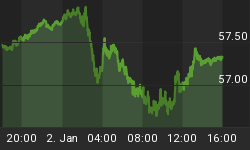If there was anything certain to come out of the COVID-19 pandemic, it is that the oil market and its participants are struggling to guesstimate how long overall demand will be depressed and how quickly it will recover in various regions of the world. When the only certain thing is uncertainty, analysts and traders once again realized that they don't have the ultimate data point about real-time or near-real-time demand.
They continue to guesstimate while collating data from various sources. And they continue to search for the data point that could become a game-changer in oil market predictions and trading.
Analysts are now combining several data points from several sources to see how gasoline demand is recovering after the crash in early April and how quickly inventories outside the U.S. are building or depleting.
The coronavirus pandemic was the perfect test lab for new sources of data about people's mobility behavior, including by car, which could have given analysts a glimpse into how much people are out and about, based on their smartphone search for directions.
During the lockdowns, Apple launched its mobility trends reports based on iPhone users' search for directions for driving and walking.
Related: Why The World Is So Divided In Its COVID-19 Response
However, traders and analysts didn't see strong correlation between search information and real use of gasoline because searching for directions is not the same as miles traveled. Traders saw that even if mobility trends were on the rise on Memorial Day weekend in the U.S., data from the EIA a week later showed that gasoline supplied –the proxy for gasoline demand in the United States—dropped by six percent at the start of the summer driving season.
The divergence in figures had some traders disregard the data from the mobility index during the pandemic, they told Reuters.
Analysts and traders were eager to pinpoint gasoline demand – a large chunk of global, as well as U.S., oil demand – in real time, but they will have to wait for the ultimate type of measurement, at least for now.
Meanwhile, they are looking at the Energy Information Administration's (EIA) reports, which are issued retroactively by at least five days, at data from TomTom about traffic in cities worldwide, at the Mobility and Engagement Index of the Dallas Fed measuring the deviation from normal mobility behaviors induced by COVID-19, and at various subscription services measuring activity and oil in storage around the world.
RBC Capital Markets, for example, used in the middle of May "a real time data approach with in-house simulation models, geolocation and satellite imaging methods" from its data science team to estimate that China's oil demand was on the mend and was expected to recover by 17 percent in Q3 and by 25 percent in Q4 compared to Q1 this year, Michael Tran, Managing Director, Energy Strategist, Global Research, at RBC Capital Markets said.
Now nearly two months later, the threat of a second wave of COVID-19 is once again puzzling forecasters and traders regarding the trend in oil demand recovery, especially in the United States.
This year's unprecedented uncertainties highlight the uncertain nature of predictions, even if real-time data were readily available.
The uncertainties are also very likely to have analysts and traders continue looking at all kinds of data even when the pandemic is finally under control and a vaccine is on the market. They will be looking for potential lasting changes to consumer behavior, including whether people will continue using more their own cars instead of public transportation, prefer driving to flying for domestic travel, or the real possibility that many people will continue working from home instead of commuting to offices.
While the oil industry braces itself for the impact of the coronavirus on long-term demand trends, oil traders and analysts continue to search for the ultimate real-time data that would give them an advantage on the oil market.
By Tsvetana Paraskova for Oilprice.com
More Top Reads From Safehaven.com:

















